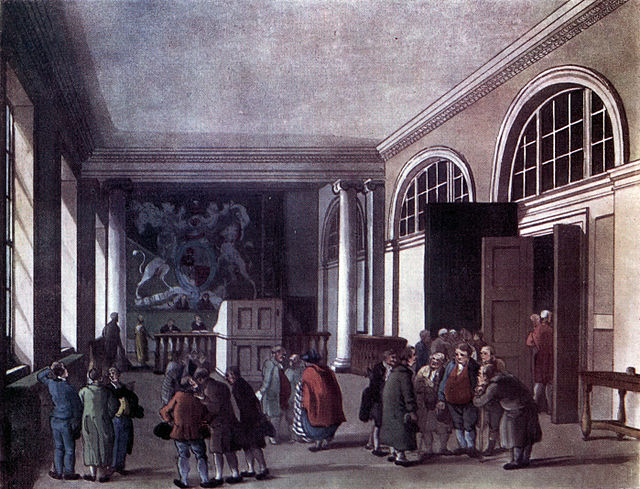HM Customs and Excise was a department of the British Government formed in 1909 by the merger of HM Customs and HM Excise; its primary responsibility was the collection of customs duties, excise duties, and other indirect taxes.
Exeter's former Custom House: built in 1681, it remained in use by HM Customs until 1989.
Custom House, Lower Thames Street, London: long-time home of HM Customs.
HMCE Office, Queen's Dock, Liverpool; opened 1993, closed 2012.
Peaked cap as worn by Preventive officers when in uniform.
His or Her Majesty's Excise refers to 'inland' duties levied on articles at the time of their manufacture. Excise duty was first raised in England in 1643. Like HM Customs, the Excise was administered by a Board of Commissioners who were accountable to the Lords Commissioners of the Treasury. While 'HM Revenue of Excise' was a phrase used in early legislation to refer to this form of duty, the body tasked with its collection and general administration was usually known as the Excise Office.
New Wing, Somerset House: home of the Inland Revenue's Excise Department from 1852 to 1909.
Gauger's office in Wadsworth Brewery.
The Excise Office, Broad Street, London: headquarters of the Excise from 1769 to 1852 (Thomas Rowlandson, 1810).
Parliamentarian John Pym, whom Blackstone calls the father of the Excise.








